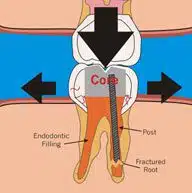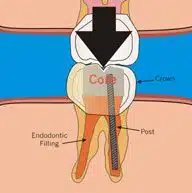Large fillings destabilize teeth and, over time, biting forces of the opposing teeth can cause cracks, breakage, inflamed roots and pain. Crowns should be placed onto teeth instead of large filling to avoid additional problems.
When a patient has a cavity (caries), the dentist must consider whether a composite restoration (filling) or a crown is the best option to repair the tooth. If the cavity is large, biting forces exerted on the tooth must be considered.
Biting Forces
When a person chews, tremendous forces are exerted on the teeth. Up to 573 pounds can be exerted on the molar teeth! This is why it is so important for dental restorations to be strong enough to withstand those forces. Once a filling becomes too wide or too deep, the integrity of the tooth is compromised.
Large fillings destabilize teeth and, over time, biting forces from the opposing teeth can cause cracks, breakage, inflamed roots and pain.
Biting forces can cause the tooth to crack at the base. Decay can occur causing tooth to fracture.
Complete crowns are restorations that cover the entire tooth. They offer a better option by providing more stability than a large filling.
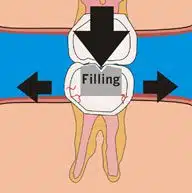
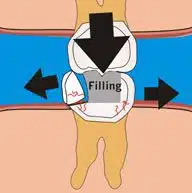
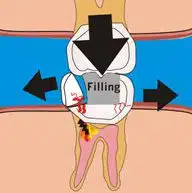
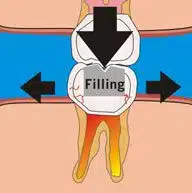
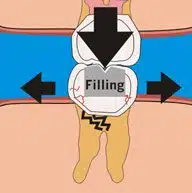
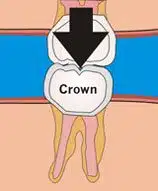
Solution
Instead of using a large filling, a crown is placed, giving the tooth more stability.
